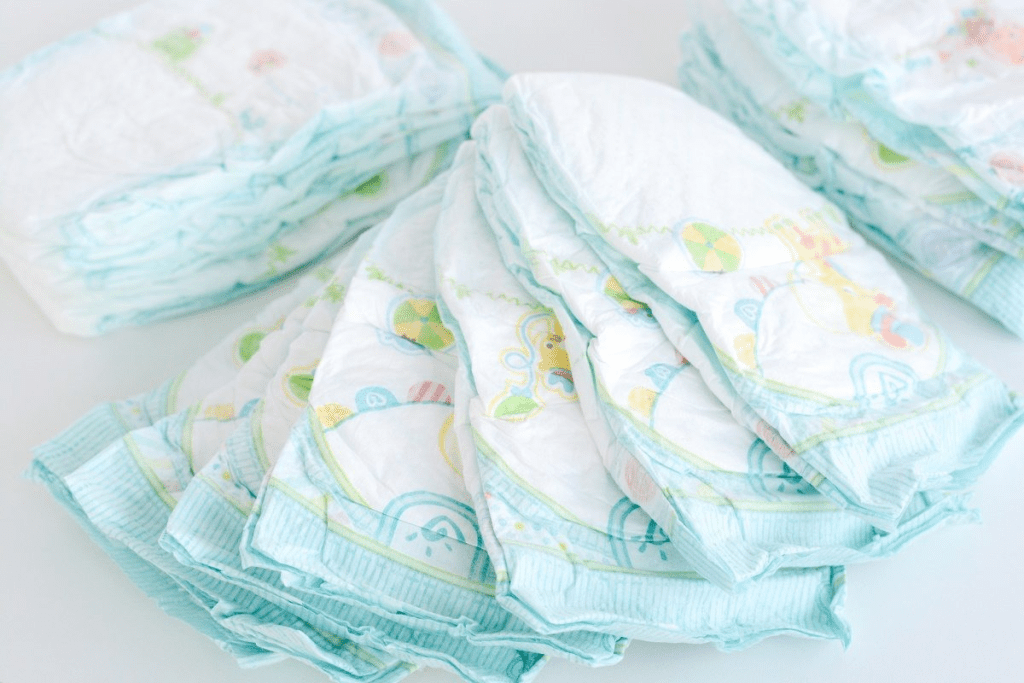Last Updated on November 25, 2025 by
Urinary incontinence after prostate surgery can be tough, often leading to a man with diapers needing support. Most men regain bladder control over time. This issue affects up to 30% of patients initially, with continence rates improving significantly within 12 months after surgery.

Choosing the right incontinence products can help. Many men deal with urinary incontinence after surgery. It’s important to know this is common.
We’ll look at how common incontinence is, the types of products available, and how to manage it. This will help patients and families understand prostate health better.
Urinary incontinence is a common issue men face after prostate surgery. This condition is mainly due to the removal of the prostate gland. It can also damage the sphincter muscle that controls urine flow. The surgery, known as prostatectomy, can significantly impact a man’s quality of life post-operatively.

The prostate gland surrounds the urethra. When it’s removed, it can disrupt the urinary sphincter’s function. This disruption can lead to a loss of bladder control, resulting in incontinence. The level of incontinence can vary, from mild leakage to more significant challenges.
Transient incontinence is common after prostate surgery. Most men experience some level of incontinence at first. Studies show that incontinence rates decrease over time, with about 89.8% of men regaining continence after 15 years. Recovery statistics show that most men regain continence within the first year, with the rate of incontinence declining to under 10% at one year post-surgery.
Understanding these statistics can help men prepare for the challenges after prostate surgery. Knowing what to wear after prostate surgery and whether you need a bag after prostate removal is key. Many men wonder if they will wear diapers after surgery. While it’s a possibility, it’s often a temporary measure.
For many men, prostate surgery starts a new chapter. This chapter might include wearing diapers or incontinence products. This big change can impact their lives in many ways, from personal hygiene to how they feel emotionally.
In the first weeks after surgery, men may face different types of incontinence. Adjusting to wearing incontinence products is key to daily life. Many find that using liners or diapers adds security and comfort.
Some common experiences include:
The emotional side of wearing diapers or incontinence products is real. Men might feel embarrassed or frustrated. It’s important to recognize these feelings and get help when needed.
Strategies for dealing with these feelings include:
Support from partners is key during recovery. Talking openly about incontinence can make relationships stronger. Partners can help with practical tasks like changing products or going to doctors’ appointments.

Most men get bladder control back in 3“18 months. But some might keep using liners or diapers for peace of mind. Knowing this can help men deal with the practical and emotional sides of recovery.
The right absorbent products can make a big difference after prostate surgery. It’s important to manage incontinence well for comfort and emotional health.
There are many incontinence products like adult diapers, pads, guards, and protective underwear. Each is for different levels of incontinence and personal choices. Knowing the differences helps patients choose the right care.
Choosing depends on the incontinence level, comfort, and lifestyle. For example, the best pads to use after prostate surgery balance absorbency and discretion well.

When picking the best pads, absorbency, comfort, and discretion matter a lot. Patients often prefer pads that fit with normal underwear for a sense of normalcy.
Using a catheter for incontinence requires the right absorbent products. For example, a diaper with a catheter needs careful use to avoid leaks and ensure comfort.
Patients and caregivers must understand the needs and challenges of catheter use. This includes the possibility of needing a leg bag or other devices. The question of do you need a bag after prostate removal varies based on the surgery and care plan.
Advanced hospitals focus on effective management, quick recovery, and patient experience. By picking the right products and managing incontinence, patients can greatly improve their recovery.
Recovering from incontinence after prostate surgery takes time. It has different stages. Knowing these stages helps men get ready for what’s ahead. It also helps them understand when they might need to use adult diapers or pads.
In the first few weeks after surgery, many men face a lot of urinary incontinence. They might need to use pads or adult diapers several times a day. The exact number can vary, but it’s often between 4 to 6 pads daily.
During this early stage, the main goal is to heal and adjust. It’s important to follow the doctor’s advice on exercises and using absorbent products as needed.
As men move into the 3-12 month period after surgery, they often see better bladder control. They might use fewer incontinence products, like 2-3 pads a day. But this can differ from person to person.
It’s key to keep doing pelvic floor rehabilitation exercises during this time. These exercises help strengthen the muscles that control urine. Men should stay patient and keep working at it, as small steps forward are good signs.
Most men see big improvements in bladder control within the first year. By 12 months after prostate surgery, many no longer need incontinence products. But, recovery times can vary, and some might need to use them for a bit longer.
If incontinence lasts beyond 12 months, it’s important to talk to a healthcare provider. They can suggest more pelvic floor rehabilitation or other treatments.
Choosing the right clothes after prostate surgery is key to comfort and confidence. Men need to wear incontinence products, so comfy and discreet clothes are a must.
Wear loose, comfy clothes to feel better with incontinence products. Soft, breathable fabrics are best to avoid skin irritation. Choosing the right underwear is key; go for supportive incontinence underwear or loose boxers.
For tops, dark colors hide leaks well, keeping things discreet. Wearing layers helps with temperature changes during recovery.
“Comfortable clothing is not just about aesthetics; it’s about creating an environment that fosters recovery and confidence.”
A healthcare professional’s insight
Men often wonder how many pads they’ll need after surgery. It depends on how much they leak. Usually, 2 to 6 pads a day are needed in the first few weeks. Incontinence products for men after surgery help keep you dry and comfy.
By picking the right clothes and managing leaks, men can recover more easily and confidently.
Using incontinence products doesn’t have to stop you from doing things you love. A few simple changes can help you stay active. We know how important it is to feel confident again after prostate surgery.
At work or out with friends, being discreet and planning ahead is key. Here are some tips:
Wear clothes that are easy to change if you need to. Starting with the right clothes is key to managing incontinence
Men might wonder, “Do surgeons wear diapers for long surgeries?” Yes, they sometimes use special absorbent products. Men using nappy products after surgery can find comfort in knowing they’re not alone. There are products made to help during this time.
Exercise is key for recovery and health. Men can stay active with incontinence products, keeping a few things in mind:
By following these tips, you can manage incontinence and keep living an active, full life. We’re here to support you every step of the way.
Men can find more ways to manage life after prostate surgery than just using incontinence products. These strategies can make recovery and overall well-being better.
Pelvic floor exercises, or Kegel exercises, are key for recovery after prostate surgery. They help strengthen muscles that support the bladder and urethra, improving urinary control. To do Kegel exercises right, men should:
Being consistent with Kegel exercises is important. Regular practice can lead to better urinary control over time.
If pelvic floor exercises don’t work, men might need medical help. Several options are available, including:
Men should talk to their healthcare provider about these options. This helps find the best choice based on their needs and medical history.
Using these strategies together, men can handle post-prostate surgery incontinence better. This can improve their quality of life.
Recovering from prostate surgery can be tough, mainly because of urinary incontinence. Men might feel shy about wearing nappies or using absorbent products. But with the right info and support, they can face this challenge with confidence.
Knowing that incontinence is common after prostate surgery can ease worries. Using the right products and doing pelvic floor exercises can greatly improve life during recovery.
Support from partners and friends is key in this journey. For example, husbands dealing with incontinence, known as diapered husbands, get a lot of emotional support from their partners.
With the right products, strategies, and support, men can feel confident and independent again. We urge men to stay informed, seek help when needed, and focus on their well-being during this important time.
Some surgeons might wear diapers or absorbent garments for very long surgeries. This is to avoid breaks and keep focus on the surgery.
For post-prostate surgery, look for pads made for male incontinence. They should be absorbent, comfortable, and discreet. Brands like TENA and Prevail are good choices.
The number of pads used daily after prostatectomy varies. It depends on how much you leak. In the first weeks, you might use many pads a day. This number goes down as you get better.
Yes, you can wear normal underwear after surgery. But, supportive or mesh underwear might be more comfortable. They help keep incontinence pads in place.
Incontinence after prostate surgery lasts differently for everyone. Some see big improvements in a few months. Others might take a year or more to fully regain control.
Yes, pelvic floor exercises, or Kegels, are recommended. They help strengthen muscles that support the bladder and urethra. This can improve urinary control.
A catheter is used right after surgery to drain urine. Managing it involves making sure it’s secure and cared for properly. This prevents problems.
Wear loose, comfortable clothes after surgery. For privacy, choose dark colors or clothes with built-in support for incontinence products.
Yes, for ongoing incontinence, there are medical options. These include surgical implants like artificial urinary sphincters or male slings. They can greatly improve or solve incontinence.
To stay active with incontinence products, pick the right ones for your needs. Plan for activities and make lifestyle changes. This ensures you feel confident and comfortable.
Subscribe to our e-newsletter to stay informed about the latest innovations in the world of health and exclusive offers!